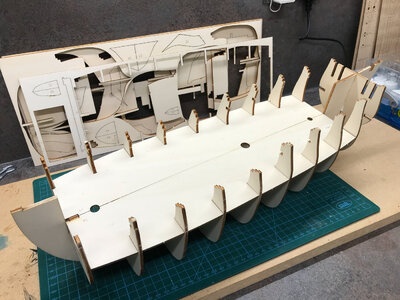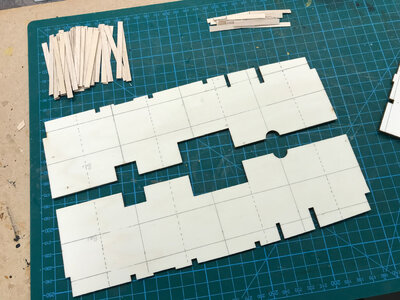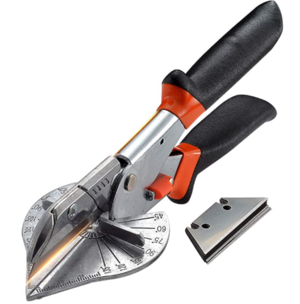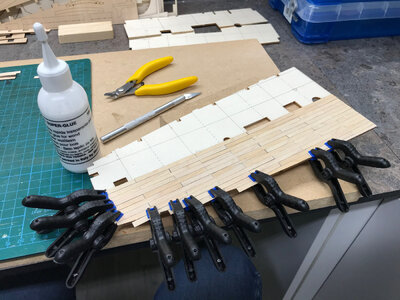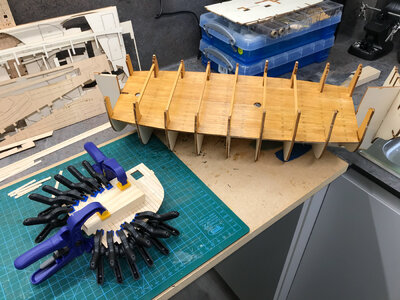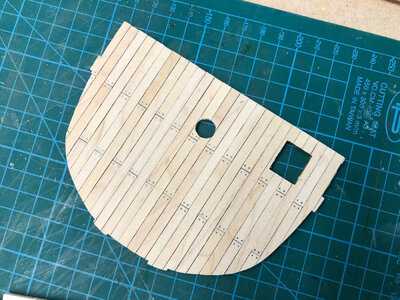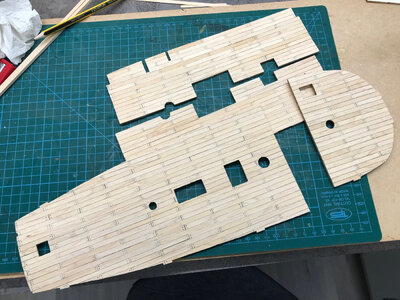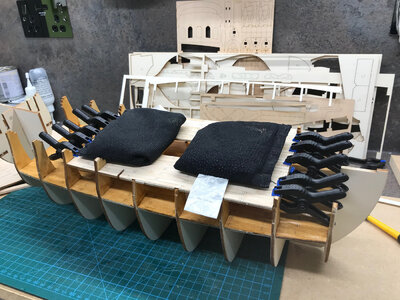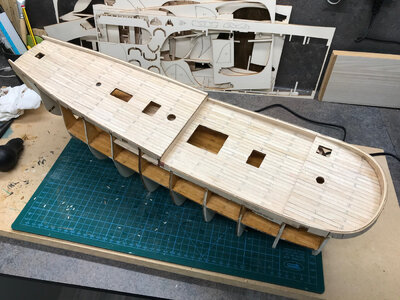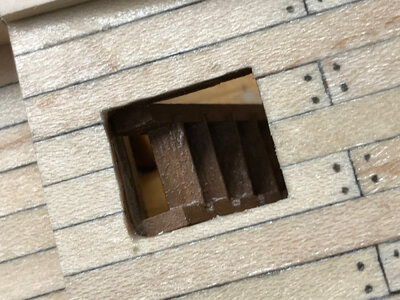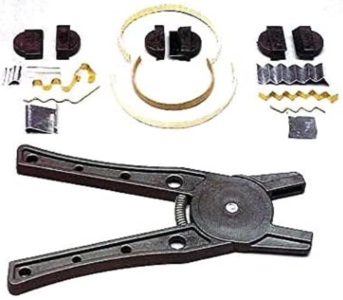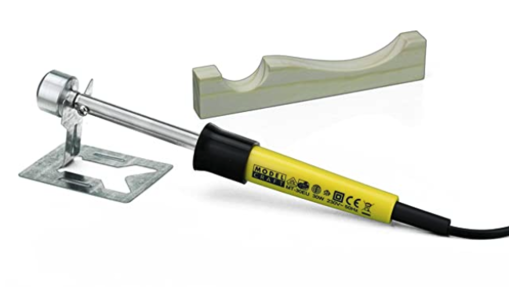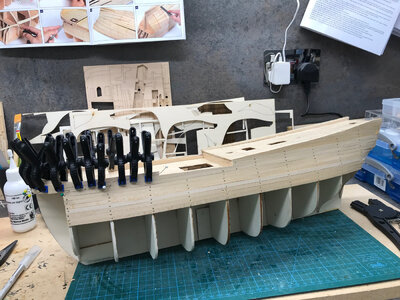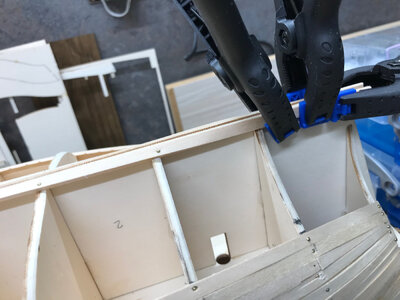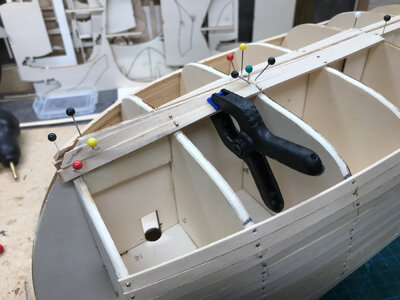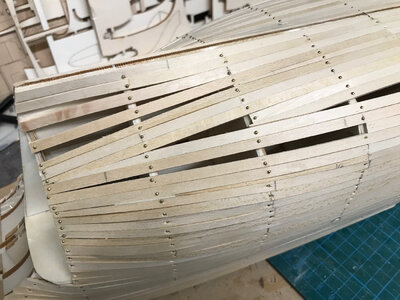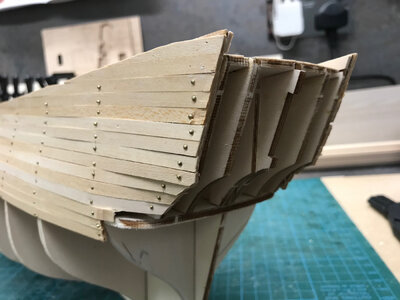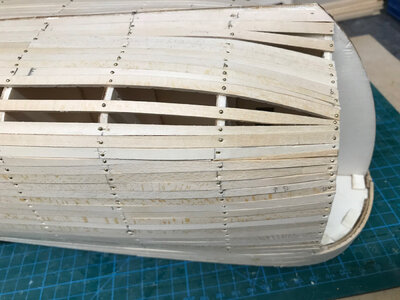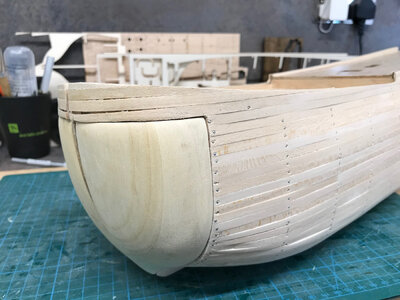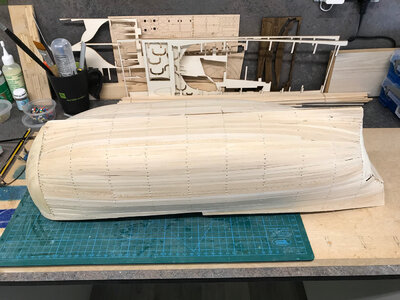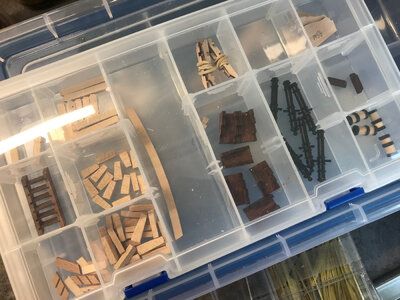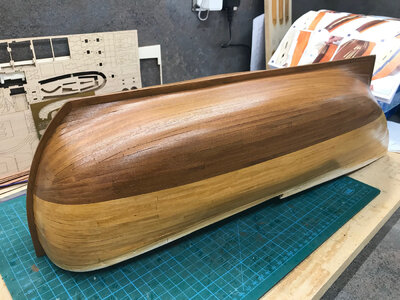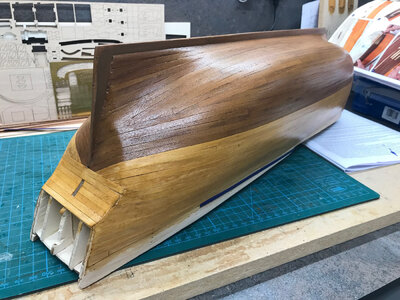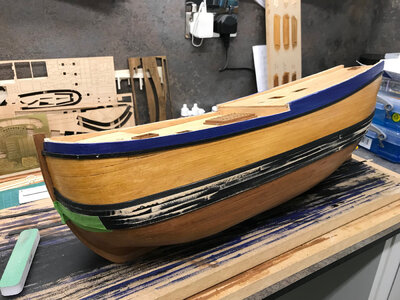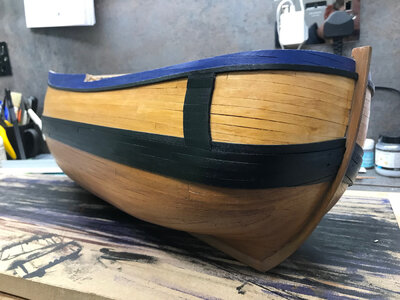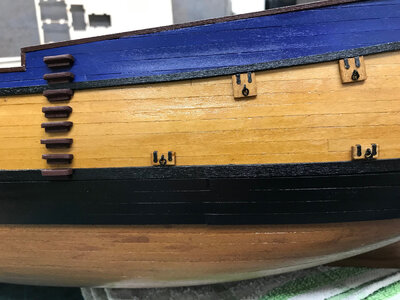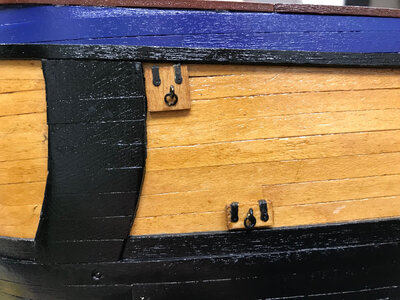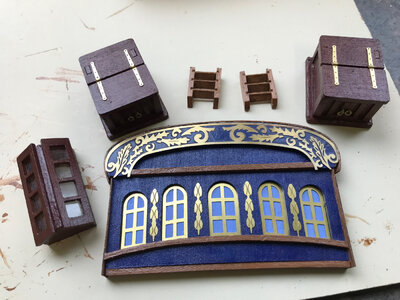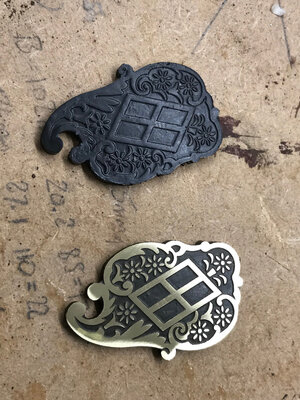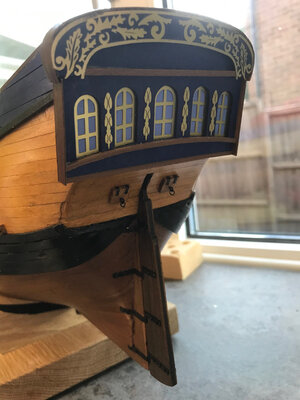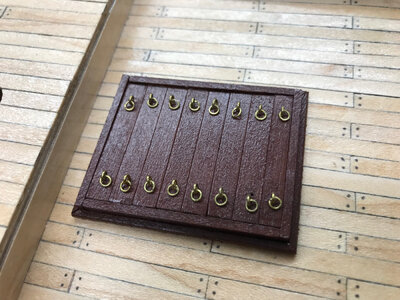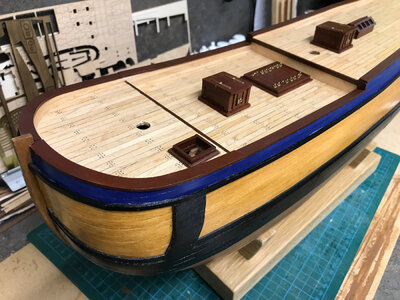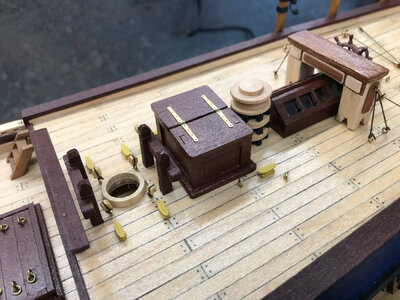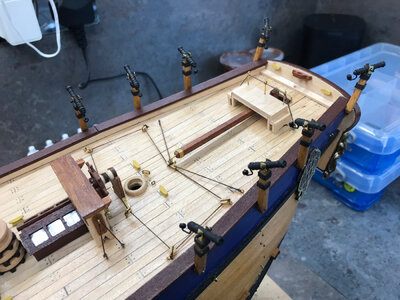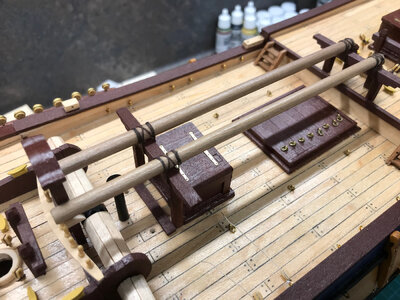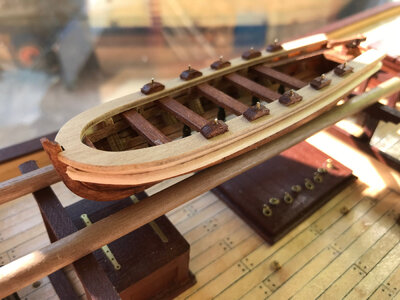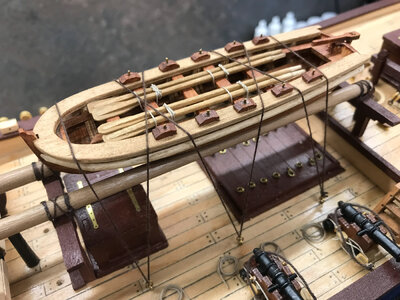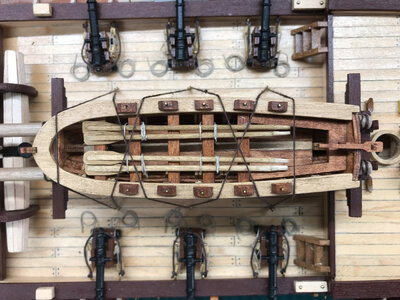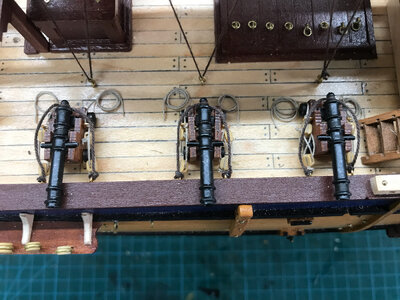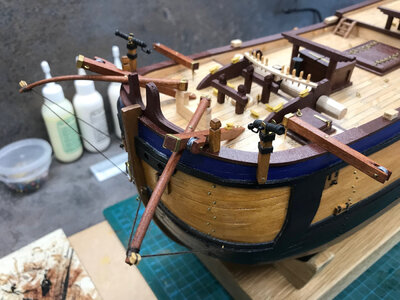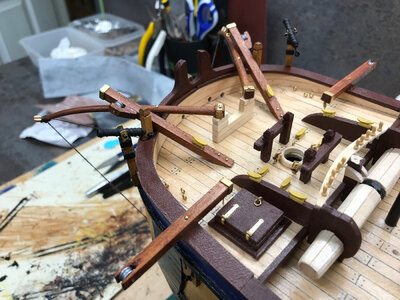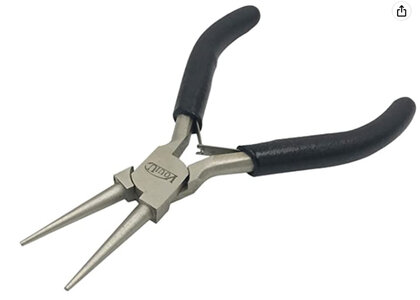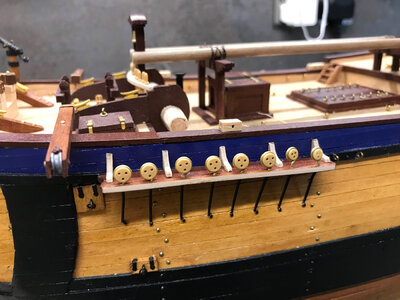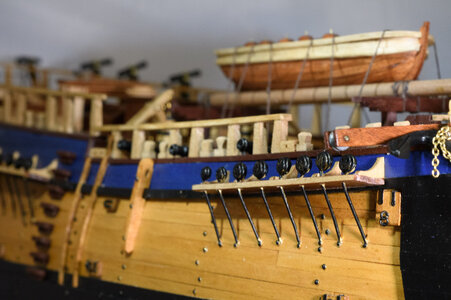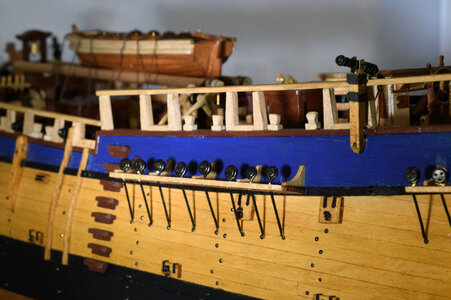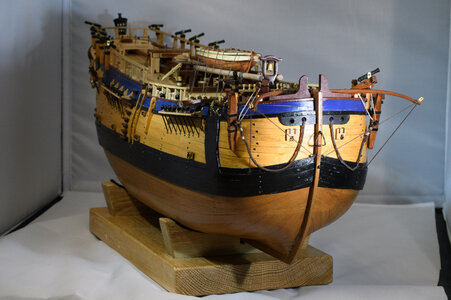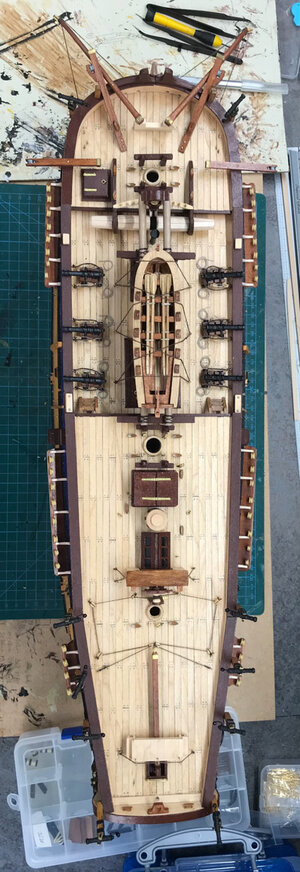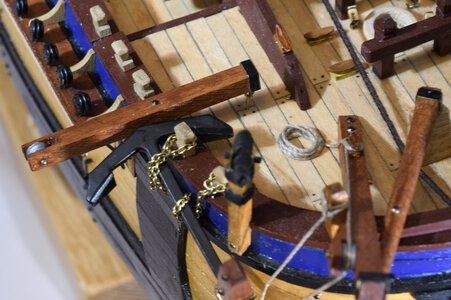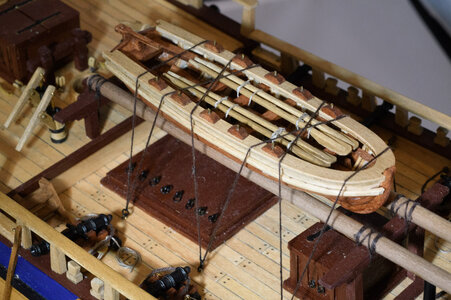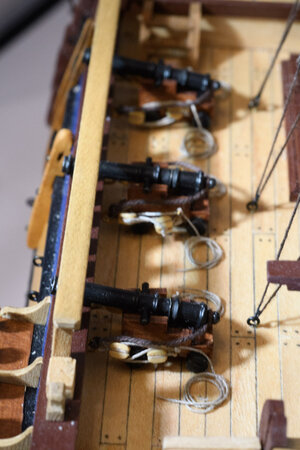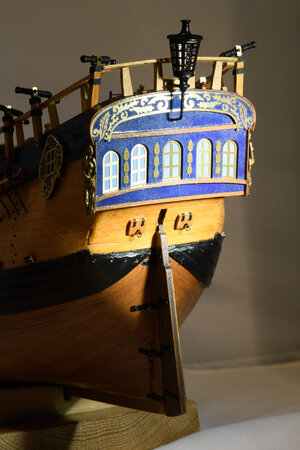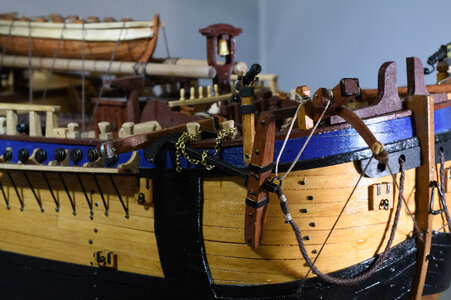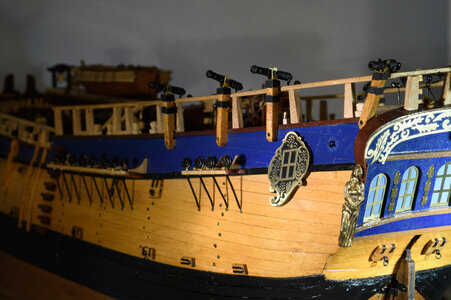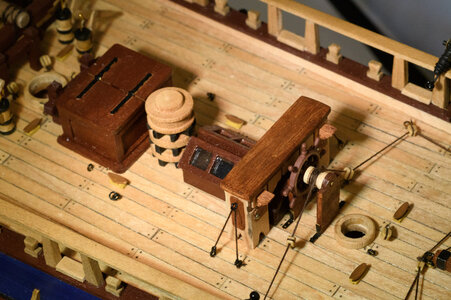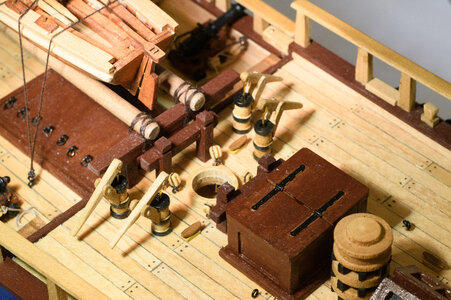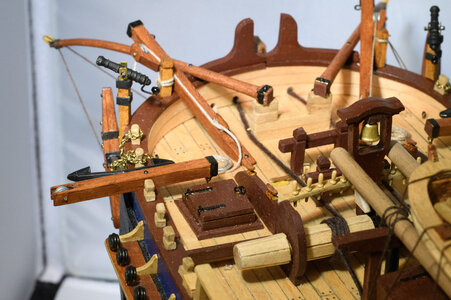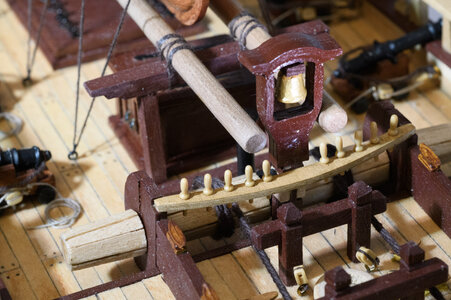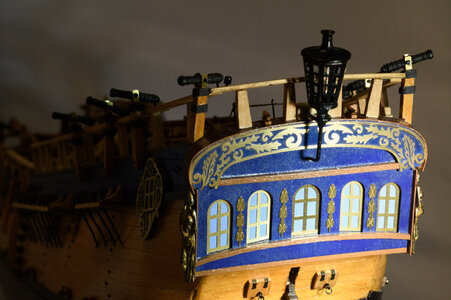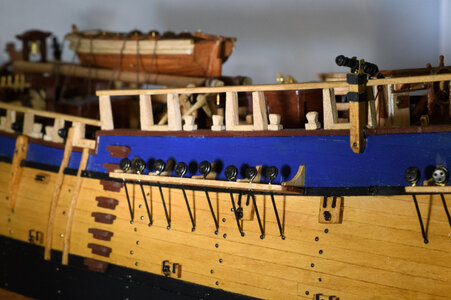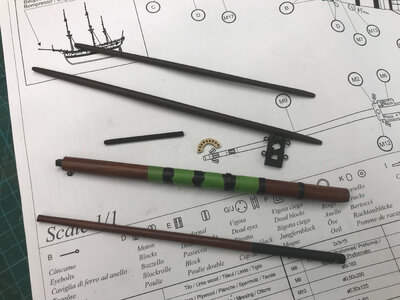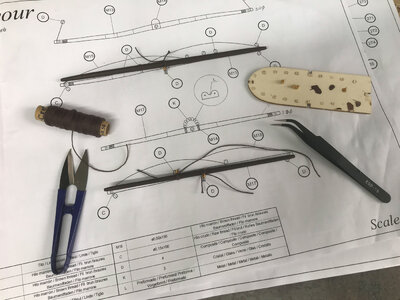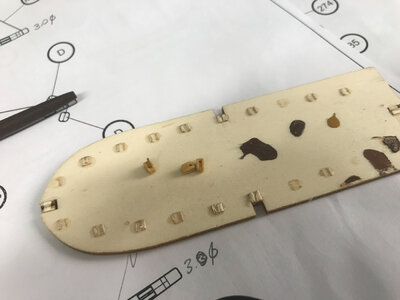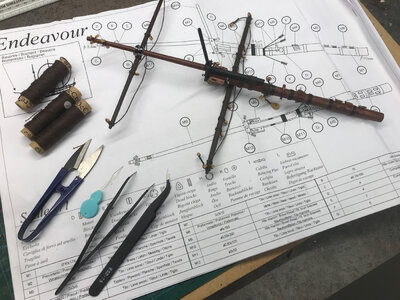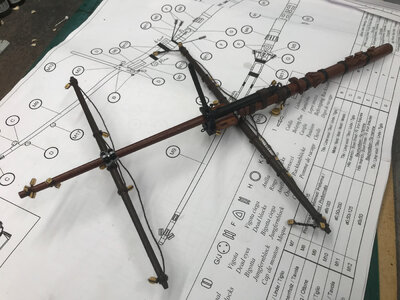- Joined
- Jun 13, 2022
- Messages
- 255
- Points
- 168

Hi all, as a newbie to this group, following my introduction comments a few folk requested that I post a build log for the Endeavour by Occre. The Endeavour is a 1:54 scale model of Captain Cook's ship, model length 815mm, height 680mm and width 300mm. I bought the kit from Cornwall Model Boats in the UK. I was looking for a more demanding and detailed model compared to my first efforts on HMS President and Endeavour looked to be an attractive option. The model parts are well packaged and I must admit at first glance looked to be a daunting yet challenging build. I started this build in January 2021 and I have just completed the hull with all fittings etc. and will post further stages of the build over the next few weeks. I am now starting the masts and rigging.
Unboxing
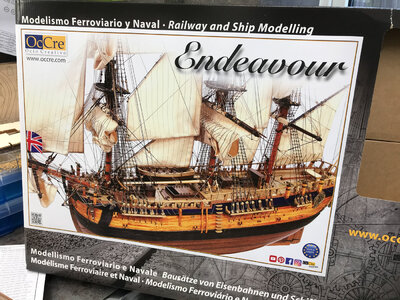
The model is laser cut and appears to my novice level at least to be good quality. Predominantly wood, it is accompanied by brass and metal fittings. The fittings are nicely packaged in plastic storage containers with lids rather than in bags or premoulded plastic/card containers, and the wood strips etc. are grouped by elastic bands. The model also comes with sails although I am not sure at this stage whether I will add those to the model or not. A paint set can also be bought for the kit although additional stains & lacquers need to be purchased.
Apologies that I don't have the full unboxing images as I had already started the build before joining SOS.
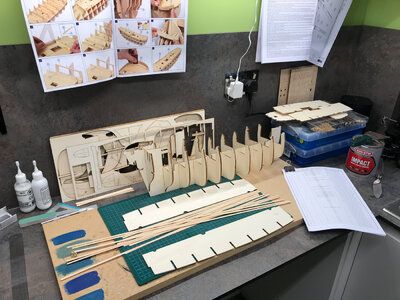
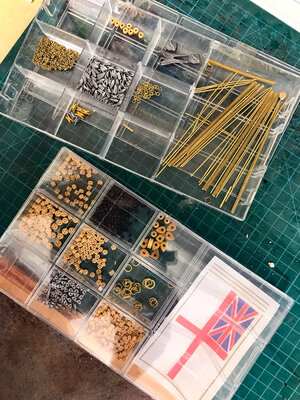
Documentation
There is a number of documents provided to support the build. There is a well laid out picture by picture booklet detailing each part of the build. For the main hull, the detail is excellent and on the whole very easy to follow. For the rigging there are a few outline pictures but the 1:1 scale plans are required to more fully understand the mast, spars and rigging detail.
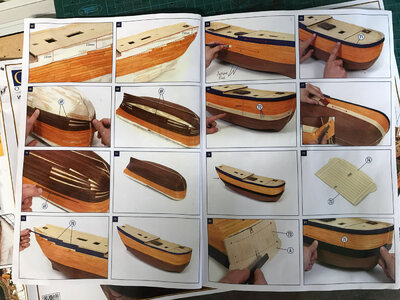
There are associated Assembly Instructions in a number of languages but I found those to be of limited use particularly as the Picture Booklet is self explanatory. The Parts List is used in association with the Picture Booklet to identify specific parts, sizes of wood etc.
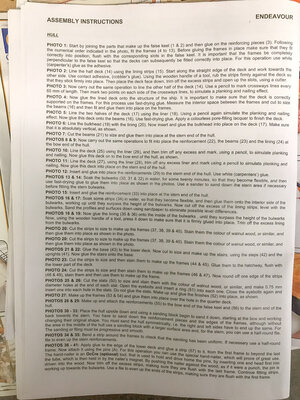
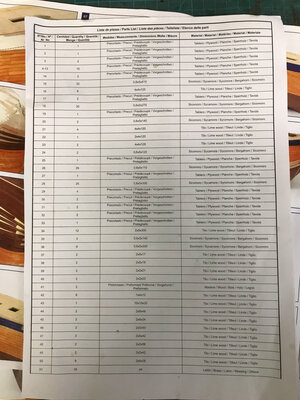
There is a 1:1 scale plan providing different elevation views which is useful specific for detail and positioning of the various deck fittings. Finally there is a set of rigging diagrams.
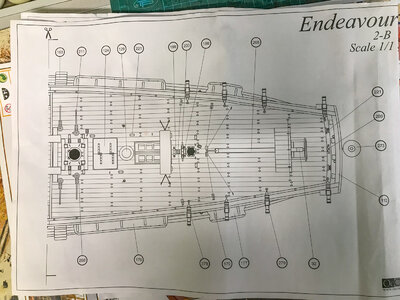
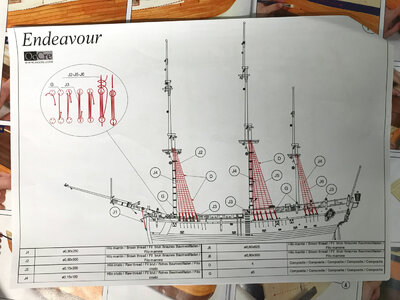
Omission - Display Stand
The one omission that I did find was the lack of a display stand. On the President there was a very basic stand and even if Occre did include a stand I suspect it would have been similarly basic and not in keeping with the larger model. As such I used American Oak to create a stand. I used the rejected wood that held the skeleton of the ship to provide a template for the supports adding a few mm to take into account the thickness added by the twin layers of hull wood. I treated the stand with furniture wax and applied some black felt to protect the hull. This stand has been useful during the build phase to support the model.
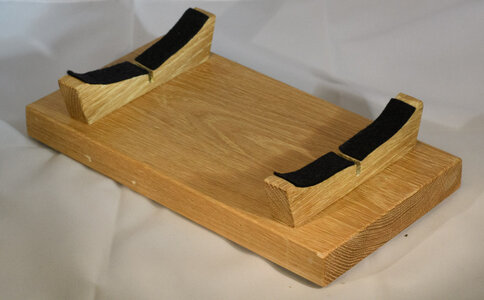
Unboxing

The model is laser cut and appears to my novice level at least to be good quality. Predominantly wood, it is accompanied by brass and metal fittings. The fittings are nicely packaged in plastic storage containers with lids rather than in bags or premoulded plastic/card containers, and the wood strips etc. are grouped by elastic bands. The model also comes with sails although I am not sure at this stage whether I will add those to the model or not. A paint set can also be bought for the kit although additional stains & lacquers need to be purchased.
Apologies that I don't have the full unboxing images as I had already started the build before joining SOS.


Documentation
There is a number of documents provided to support the build. There is a well laid out picture by picture booklet detailing each part of the build. For the main hull, the detail is excellent and on the whole very easy to follow. For the rigging there are a few outline pictures but the 1:1 scale plans are required to more fully understand the mast, spars and rigging detail.

There are associated Assembly Instructions in a number of languages but I found those to be of limited use particularly as the Picture Booklet is self explanatory. The Parts List is used in association with the Picture Booklet to identify specific parts, sizes of wood etc.


There is a 1:1 scale plan providing different elevation views which is useful specific for detail and positioning of the various deck fittings. Finally there is a set of rigging diagrams.


Omission - Display Stand
The one omission that I did find was the lack of a display stand. On the President there was a very basic stand and even if Occre did include a stand I suspect it would have been similarly basic and not in keeping with the larger model. As such I used American Oak to create a stand. I used the rejected wood that held the skeleton of the ship to provide a template for the supports adding a few mm to take into account the thickness added by the twin layers of hull wood. I treated the stand with furniture wax and applied some black felt to protect the hull. This stand has been useful during the build phase to support the model.


